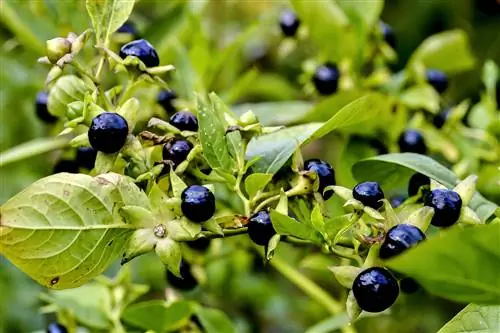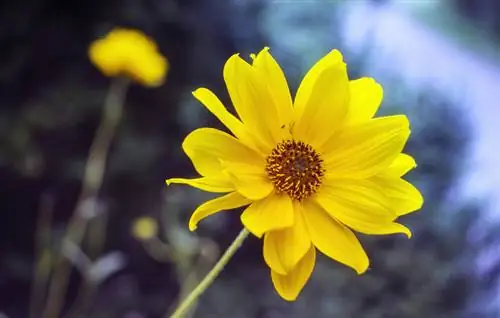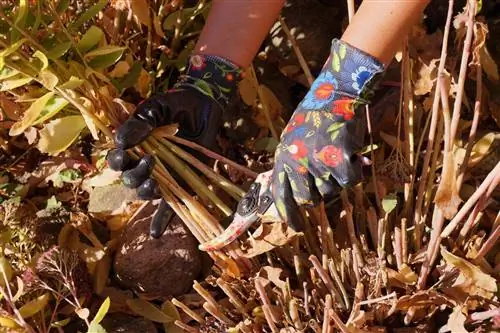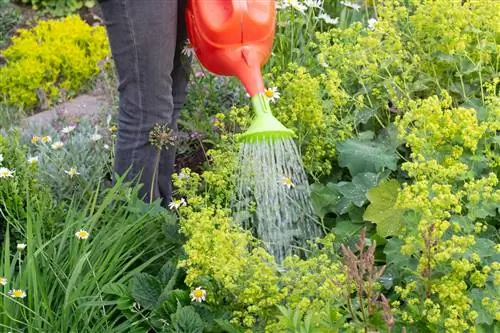- Author admin [email protected].
- Public 2023-12-16 16:46.
- Last modified 2025-01-23 11:20.
The real arnica (Arnica montana) used to play a role not only in natural medicine, but also as a spiritually significant magic herb. As a result, the plant was almost wiped out in many areas of Central Europe.
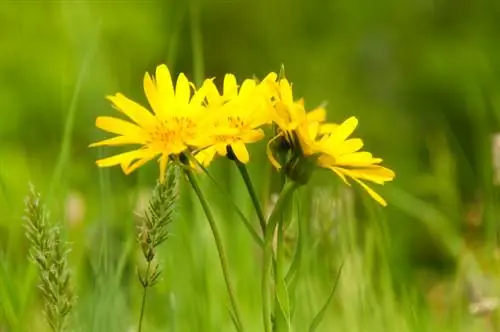
Which plants can be confused with arnica?
The real arnica (Arnica montana) can easily be confused with other plants such as willow-leaved elecampane, sword-leaved elecampane, orange-red hawkweed, meadow beard or oxeye. To avoid confusion, look for features such as opposite, hairy leaves, 14 to 17 multi-veined ray florets and aromatic scent of the flowers.
The historical confusion of arnica
Although arnica was probably already used as a medicinal herb in Celtic and Germanic times, the evidence in medieval sources largely refers to other plants. For example, Hildegard von Bingen in her “Physica” is said to have meant the wolf's milk plant not arnica, but rather a spurge plant. Various sources from the 16th century also probably confused arnica with other plants. For example, Alisma is the water plantain or the frog spoonwort. These other plants were often incorrectly attributed to the medicinal properties that were attributed to arnica when carefully dosed.
Optical doppelgangers of the arnica plant
There are various plant species in Central Europe with which arnica can possibly be confused:
- the willow-leaved elecampane (Inula salicina)
- the sword-leaved elecampane (Inula ensifolia)
- the orange-red hawkweed (Hieracium aurantiacum)
- the meadow longhorn beard (Tragopodon pratensis)
- the ox eye or cow eye (Buphtalmum salicifolium)
Arnica is often confused with other plants because its yellow flowers are similar to many other plants. However, real arnica does not have to be confused with other plant species for dangerous effects to occur when used: after all, the toxic effect of arnica is so strong that it is no longer approved for internal use today.
Determine real arnica safely
The real arnica is similar to many other plants with its typical composite flowers, but connoisseurs can still identify the plant relatively clearly visually. In Central Europe, arnica usually blooms between May and August. The cup-shaped inflorescences usually have a diameter of 4 to 8 cm. 14 to 17 multi-nerved ray florets grow around the tubular flowers. The leaves of arnica are hairy and (unlike, for example, oxeye) opposite. The leaves are arranged in a rosette shape and are ovate to lanceolate. The aromatic scent is also characteristic of the flowers of the arnica, which does not occur in this form in the willow-leaved elecampane.
Tip
The cultivation of arnica for medicinal purposes is quite controversial these days, as dosing it yourself can cause major problems and lead to serious poisoning. Therefore, tinctures (€11.00 on Amazon) and extracts for external use are better bought from specialist retailers.


